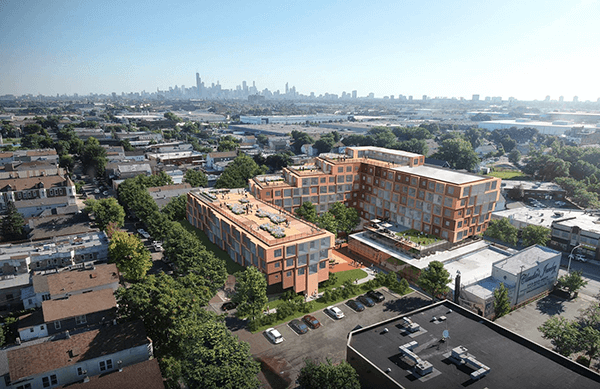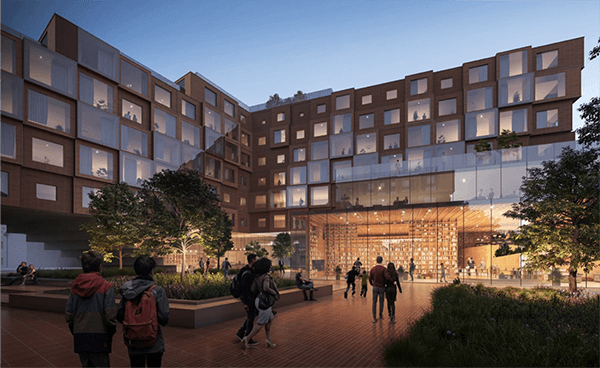AUGUST 11, 2024
Back of the Yards: Community-Led Renaissance In the Making
The development of Back of the Yards in Chicago is a testament to the resilience and ingenuity of its residents and stakeholders. Situated on the city's southwest side, the neighborhood has a rich history shaped by its industrial past, notably the Union Stock Yards. However, as the industrial era waned, Back of the Yards faced economic challenges and disinvestment.

In response to these challenges, community leaders, local organizations, and residents came together to initiate a revitalization process. One of the key strategies has been the redevelopment of vacant and underutilized spaces. Former industrial sites have been repurposed into mixed-use developments, incorporating commercial, residential, and recreational elements. These projects have not only breathed new life into the neighborhood but have also provided much-needed amenities and services for residents.
Moreover, affordable housing has been a cornerstone of the redevelopment efforts. Through partnerships with developers and government agencies, initiatives to rehabilitate existing housing stock and construct new affordable housing units have been implemented. This has helped address housing affordability issues and promote socio-economic diversity within the community.
Another crucial aspect of the Back of the Yards development has been the emphasis on sustainability and green infrastructure. Projects such as community gardens, parks, and green spaces have not only enhanced the aesthetic appeal of the neighborhood but have also improved environmental quality and promoted a healthier lifestyle for residents.

A Renaissance in the Making
The Chicago Stockyards, once the bustling epicenter of the American meatpacking industry, held a pivotal role in shaping the city's economic landscape. Established in the late 19th century, the Stockyards quickly grew into the largest livestock market in the world, processing millions of animals annually and supplying meat to the nation. This industrial behemoth not only fueled Chicago's economic prosperity but also attracted a diverse influx of immigrants seeking employment opportunities, particularly from Europe and later from Latin America.
The adjoining neighborhood, Back of the Yards, emerged as a vibrant community deeply intertwined with the Stockyards' fortunes. Initially a settlement for workers employed in the meatpacking plants, Back of the Yards became synonymous with blue-collar labor and immigrant culture. Its streets buzzed with activity, reflecting the multicultural tapestry of its residents, who hailed from countries like Poland, Ireland, Italy, and Mexico. However, alongside the hustle and bustle lay the harsh realities of industrial labor, including poor working conditions, overcrowded tenements, and environmental degradation.
Despite the challenges, Back of the Yards thrived as a close-knit community, fostering a strong sense of solidarity among its residents. Mutual aid societies, ethnic churches, and neighborhood associations played pivotal roles in providing support networks and preserving cultural traditions. Moreover, grassroots activism and labor organizing efforts emerged as powerful tools for advocating workers' rights and improving living standards. The famous 1904 meatpacking strike, led by labor leader "Big Bill" Haywood, stands as a testament to the resilience and determination of Back of the Yards' working-class population.
However, the decline of the Stockyards in the mid-20th century dealt a devastating blow to both the neighborhood and the city. Automation, shifts in transportation, and changing market dynamics led to the closure of many meatpacking plants, triggering widespread job losses and economic dislocation. Back of the Yards, once a thriving hub of industry, faced a period of decline characterized by disinvestment, depopulation, and urban decay. Yet, even in the face of adversity, the community's spirit endured, laying the groundwork for future revitalization efforts and a new chapter in the neighborhood's history.
Renderings of the Highly Anticipated Development
Recently, renderings have surfaced depicting ambitious redevelopment plans for a vibrant neighborhood in Chicago's southwest side. These visual representations showcase a vision for revitalization, hinting at a future characterized by modern amenities, green spaces, and community-centric design. The renderings depict a transformational shift, with dilapidated areas potentially giving way to vibrant mixed-use developments, inviting parks, and pedestrian-friendly streetscapes.
One striking aspect of the renderings is the emphasis on creating a sense of place and identity within the neighborhood. Proposed developments include architecturally distinctive buildings that blend seamlessly with the existing urban fabric while introducing contemporary design elements. Green infrastructure features prominently, with landscaped plazas, tree-lined boulevards, and rooftop gardens contributing to a more sustainable and aesthetically pleasing environment. Moreover, the inclusion of public art installations and cultural landmarks reflects a commitment to preserving the area's rich history and fostering a sense of pride among residents.

Additionally, the renderings highlight efforts to address longstanding socio-economic disparities and promote inclusive growth. Proposed mixed-income housing developments aim to provide affordable housing options while promoting socio-economic diversity within the community. Furthermore, commercial spaces and amenities are strategically integrated to enhance accessibility and stimulate local economic activity. Overall, the renderings offer a tantalizing glimpse into a future where innovation, sustainability, and community engagement converge to shape a more vibrant and equitable urban landscape.
Overall, the building of Back of the Yards development in Chicago exemplifies a collaborative and holistic approach to urban revitalization. By leveraging community assets, fostering partnerships, and prioritizing the needs of residents, the neighborhood has undergone a remarkable transformation, becoming a model for sustainable and equitable development in the city.
 Amo Realty
Amo Realty